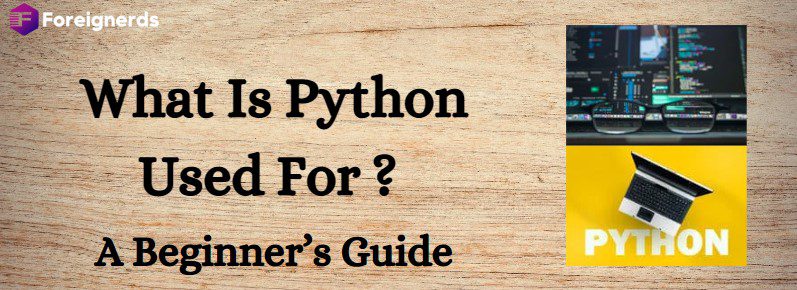In today’s digital age, programming languages are the building blocks of technology. Among them, Python stands out as one of the most versatile and beginner-friendly languages. But what is Python used for? In this comprehensive guide, we’ll explore the myriad of applications Python offers to beginners and experienced developers alike. So, fasten your seatbelt, and let’s dive into the world of Python!
Understanding Python
A Brief Overview
Python is a high-level, interpreted programming language known for its simplicity and readability. Created by Guido van Rossum in the late 1980s, Python has gained immense popularity in various fields over the years.
Easy Syntax
One of the key reasons for Python’s popularity is its straightforward syntax. Unlike many other languages, Python uses indentation to define code blocks, making it exceptionally readable.
Versatility
Python’s versatility is a major selling point. It can be used for a wide range of applications, from web development and data analysis to machine learning and artificial intelligence.
Python in Web Development
Building Websites
Python is widely used for web development. Frameworks like Django and Flask provide powerful tools to create robust, scalable websites.
Rapid Development
Python’s simplicity allows developers to create web applications quickly. This can be especially appealing to startups and businesses looking to launch their online presence.
Python in Data Analysis
Data Crunching
Python has become the go-to language for data analysis. Libraries like Pandas and NumPy simplify data manipulation and analysis tasks.
Visualization
Matplotlib and Seaborn enable data scientists to create stunning visualizations, making complex data more accessible.
Python in Machine Learning
AI and Machine Learning
Python is at the forefront of the AI and machine learning revolution. Libraries such as TensorFlow and PyTorch facilitate the development of intelligent systems.
Predictive Analytics
Python’s extensive libraries make it easy to build predictive models, enabling businesses to make data-driven decisions.
Python in Automation
Simplifying Tasks
Python is a powerful tool for automating repetitive tasks. Whether it’s file management or system administration, Python can streamline workflows.
Scripting
Python’s scripting capabilities are highly valued by system administrators and IT professionals for its reliability and ease of use.
Python in Education
Teaching Programming
Python is often the language of choice for teaching programming to beginners due to its readability and gentle learning curve.
Educational Resources
A wealth of educational resources and community support make Python an excellent choice for aspiring programmers.
Python in the Sciences
Scientific Computing
Scientists and researchers use Python for simulations, data analysis, and visualization in fields like physics, chemistry, and biology.
Open-Source Tools
The open-source nature of Python fosters collaboration and the development of specialized scientific libraries.
Conclusion
In conclusion, Python is a Swiss Army knife of programming languages. It caters to a wide range of applications, from web development and data
analysis to machine learning and automation. Its user-friendly syntax, vast community, and extensive libraries make it the go-to choice for beginners and experts alike. So, if you’re wondering what Python is used for, the answer is: almost anything you can imagine.
